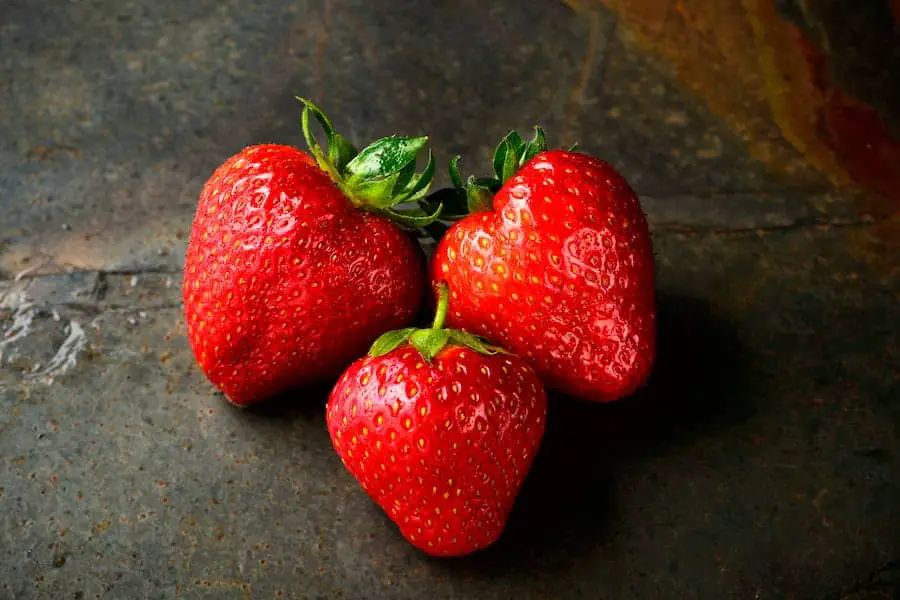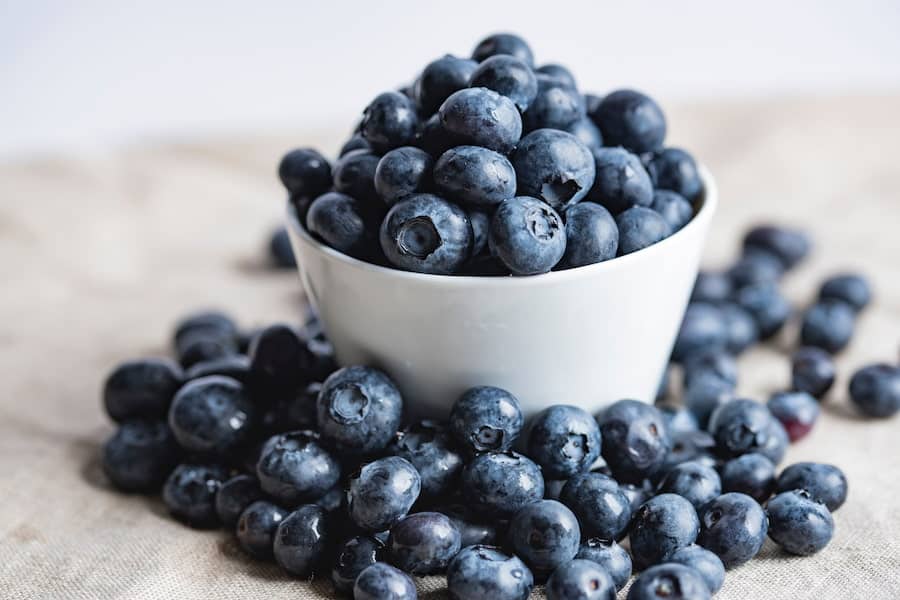If you buy something through a link in our posts, we may get a small share of the sale.
You may leave the fruit to the secondary mead to add a fruity flavor. However, it is challenging to know how long to leave fruit in the secondary mead to get the flavor right. Here is everything you may need to know on how long you should leave the fruit in the mead.
How Long to Leave Fruit in Secondary Mead
When you add fruit to secondary mead, the sugars in the fruit will help in fuelling the secondary fermentation. There will also be extraction of fruit flavors from the fruit solids, and the mead will have a fruity flavor. However, it’s important to note the following:
- This extraction of flavors and sugars will take around one to two weeks. The infusion of aromas and flavors will take less than one week.
- It is advisable to wait for around two weeks to make sure the sugars ferment and you get the full extraction of the color, aroma ,and flavor from the fruit.

Ultimately, the duration you should leave the fruit in the mead during secondary fermentation will depend on the type and quantity of the fruit.
The general rule of making mead is to use one pound of fresh fruit in one gallon of mead. Adding more than this amount can make the mead achieve the flavor you desire within five days.
On the other hand, adding a less amount might need you to leave the fruit for around two weeks. Here are some factors that affect how long you will leave fruit in your secondary mead.
Type of the Fruit
Keeping in mind that some fruits are mildly-flavored, others medium-intensity, and others strongly-flavored, they will have different flavor impacts on your secondary mead if you leave them for the same time.
Here are some guidelines on different types of fruits you should add to your secondary mead if you plan to leave your fruit for one week. Keep in mind that these fruit amounts provide a 5-gallon mead with a medium fruit flavor, so adjust according to your needs and the amount of mead.
Cherries
You can add around seven to eight pounds of tart cherries to the secondary mead. That’ll be about 1.4 to 1.6 pounds of tart cherries per gallon of mead. If you want to get strong flavors within one week, consider adding around 1.8 pounds per gallon of secondary mead.
For the sweet cherries, you need to add around eight to nine pounds, which would be an equivalent of 1.4 to 1.8 pounds per gallon of secondary mead. If you want to leave the cherries for one week and get a solid sweet cherry flavor, add around two pounds per gallon.
Cysers
You can add about 16 ounces or three cans of apple juice concentrate in the secondary mead for you to obtain a medium cyser flavor.

Blueberry
You will need to add seven to 10 pounds of blueberries to the mead during secondary fermentation. That will be an equivalent of 1.5 to two pounds per gallon. If you want a stronger blueberry flavor within one week, you can add about 2.2 pounds of blueberries per gallon of secondary mead.
Citrus
You can add around six to eight pounds of citrus to your mead during secondary fermentation if you want to get a medium flavor within one week. That will be an equivalent of 1.2 to 1.6 pounds per gallon. On the other hand, you can add about 1.8 pounds per gallon if you want a strong flavor within one week.
Currant
You can add about 1.2 to 1.6 pounds per gallon to the secondary mead if you want a medium flavor and about 1.8 pounds if you want a strong flavor within one week.
Strawberry
If you want a medium strawberry flavor in your secondary mead, add about 1.2 to two pounds per gallon and 2.2 pounds per gallon if you want a strong flavor.
Raspberry
If you want a medium raspberry flavor within one week, add about one to 1.6 pounds of raspberry in one gallon of secondary mead. On the other hand, add about 1.8 pounds per gallon if you want a strong raspberry flavor.
Plum
If you want your secondary mead to have a medium plum flavor within one week, you should add about 1.4 to 1.8 pounds of plum in 1 gallon of mead. On the other hand, you can add about two pounds per gallon if you want a strong plum flavor.
Peach
During secondary fermentation, you should add about eight to 12 pounds of peaches to your mead. That’ll be an equivalent of 1.2 to 2.4 pounds per gallon for a medium peach flavor. If you want a stronger peach character within one week, consider adding about 2.5 pounds per gallon.
Melon
If you want a medium melon flavor in your secondary mead, add a melon pulp of around 1.2 to 1.6 pounds per gallon of secondary mead. On the other hand, you can add approximately 1.8 pounds per gallon if you want a strong melon character in your secondary mead.
Mead Style
In most cases, two-thirds of the base mead will have fermented by the time you are adding fruit during the secondary fermentation. However, when you add the fruit, there are higher chances of the fermentation process renewing due to the extra sugar in the fruits and the dilution of alcohol content in the mead by the excess water content in the fruit.

Even a complete fermentation can restart due to the extra sugars and alcohol dilution. That means adding fruit during secondary fermentation can help you control the fermentation and final taste of the mead fermentation according to the style you want.
Although many brewers control the style of the mead by determining the right amount of fruit to add during secondary fermentation, you can control the style by regulating the time you leave the fruit in the secondary mead. Typically, the longer you leave the fruit in the secondary mead, the more the fermentation will occur, and the more the mead will have a fruity flavor.
Size of the Fruit Pieces
Before adding the fruit to the secondary mead, you should reduce it into smaller pieces by chopping it with a food processor, mashing it with a potato masher, or cutting it up with a knife.
Typically, reducing the fruits into smaller pieces helps to improve the extraction of juices and sugars from the fruit during secondary fermentation.
However, the different mashing methods will result in different fruit sizes depending on the type of fruit. If the fruit pieces are large, the extraction of juices and sugars may take longer, and you might need to leave the fruit in the beer for up to two weeks.
On the other hand, if the fruit pieces are smaller, the extraction of juices and sugars will be fast enough, and you might only need to leave the fruit in the secondary mead for only five days. However, it is not advisable to reduce the fruits to smaller sizes like powder.
Fruit Concentrates
A fruit concentrate is a typical fruit but with the water removed. The fruit loses the vitamin C, fiber, and volume, and retains only the calories and the sugars. You can decide to use fruit concentrates instead of fruits. Usually, the fruit concentrate will achieve the fruit flavor you desire within a shorter duration than when using a fruit.
Punching Down
Fruit solids will usually float when you add them in a secondary mead. While floating, their contact with the fermenting mead is minimal, and the extraction of juices and sugars is minimal.
That means they will take much longer before the extraction of sugars and juices is complete. However, you can improve the contact by punching them down using a sanitized potato masher or a spoon.
This punching down improves the extraction of juices and sugars, reducing the time you need to leave the fruit in the beer. You should be extremely careful about the cleanliness and sanitization of the tool you are using to punch down to avoid contamination.
Frequently Asked Questions
What Is the Best Fruit to Add in Secondary Mead?
The best fruit to add in secondary will depend on the style of the mead and the fruit flavor you want. Some fruits will also have similar flavor effects, and so it will also depend on which fruit is available. For instance, raspberry and cranberry have the same flavor effects.
Why Does Mead Taste Like Vinegar Even After Adding Fruit?
The main reason why mead may taste like vinegar even after adding a different fruit flavor is bacterial contamination. In most cases, bacterial contamination can happen if you use an unsanitized potato masher or spoon when punching down the fruit in the mead.
The mead might even completely turn into vinegar over time. That means you don’t have to throw away a poor or contaminated batch. Instead, let it ferment and turn into vinegar.
What Is the Difference Between Melomel and Mead?
Melomel consists of fermented fruit and honey, while mead consists of fermented honey. That means melomel is typically a mead with fruit. In some instances, melomels have distinctions on the type of fruits. For example, many people describe melomels as mead fermented with fruits such as grapes.

Final Thoughts
All said, what matters is the flavor character you desire, not how long to leave fruit in secondary mead. You need to taste the mead to determine whether their flavor character is what you desire. Once the mead achieves the flavor, rack off the fruit from the secondary mead.

